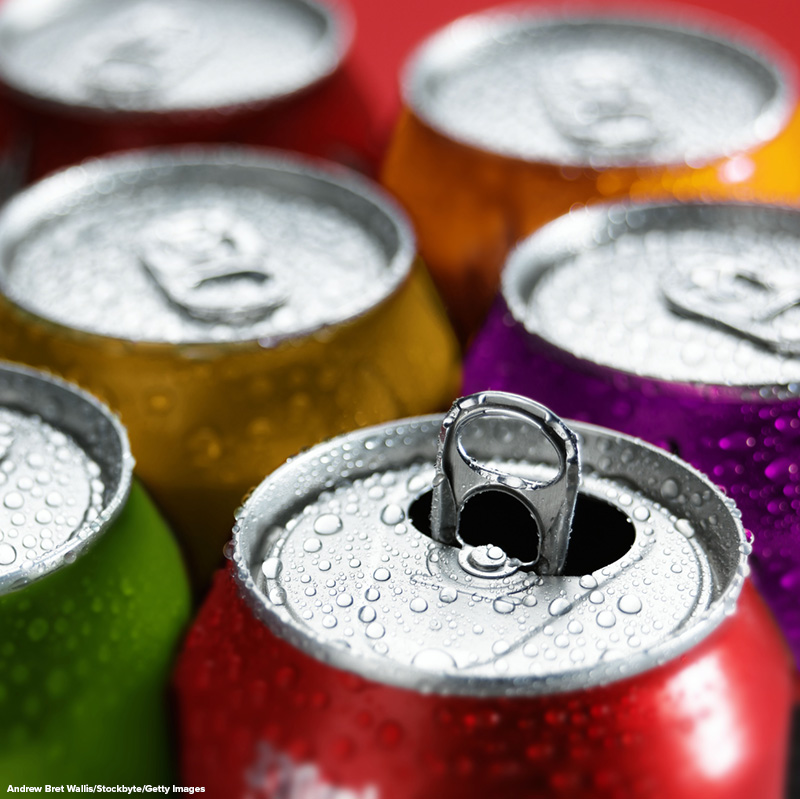New Study Reveals Global Increase in Sugar-Sweetened Beverages
What types of beverages do you reach for most often? Water? Soft drinks? Energy drinks? A new study shows that adults around the world drank about 16 percent more sugary beverages in 2018 than they did in 1990. However, that number varied widely depending on the region. Tufts University researchers set out to see how the global intake of sugar-sweetened drinks changed over the last few decades. Their study was published in the journal Nature Communications in October 2023.
A Priority Health Concern
Sugary drinks are a public health concern. They are linked with obesity (too much weight), heart disease, type 2 diabetes, cancer, and tooth decay. Many of these diet-related conditions are among the leading causes of illness and death. People can often reduce their risk by changing what they eat and drink. The World Health Organization recommends that people limit the intake of added sugars to less than ten percent of a person’s total calories per day.

Research Factors
This study examined how many sugar-sweetened beverages (SSBs) were consumed by adults aged 20 and older from 1990 to 2018. The Centers for Disease Control and Prevention define SSBs as any liquids that are sweetened with added sugars. The study included soft drinks, energy drinks, fruit drinks, punch, lemonade, and aguas frescas. Aguas frescas are made of fruit blended with water, lime juice, and added sweetener. They are popular in Mexico and Latin America. The study did not include sugar-free artificially sweetened beverages, 100 percent fruit and vegetable juices, and sweetened milk. One serving size was eight ounces.
Findings of Highest Intakes
In 2018 the average adult world-wide drank 2.7 servings of sugary drinks per week. That average changed greatly depending on which part of the world you looked at. In South Asia, the average adult drank only 0.7 servings per week. Meanwhile in Latin America and the Caribbean, it was as high as 7.8 servings per week. There were 185 countries included in the study. In 58 of them, the average intake was more than 7 servings per week in 2018.
Among the 25 most populated countries in the world, Mexico had the highest number of servings of sugary beverages in 2018. The lowest number of servings were in India, China, and Bangladesh.
2018 Highest Intakes of Most Populated Countries (Servings per Week)
| Mexico | 8.9 |
| Ethiopia | 7.1 |
| United States | 4.9 |
| Nigeria | 4.9 |
2018 Lowest Intakes of Most Populated Countries (Servings per Week)
| India | 0.2 |
| China | 0.2 |
| Bandladesh | 0.2 |
Overall, the largest increase from 1990 to 2018 took place in Nigeria. People there drank more than four percent more sugary drinks in 2018 than in 1990. The largest decrease took place in Brazil where people drank nearly three percent fewer sugary drinks.
Differences Within Countries and Regions
Researchers also studied whether gender, age, education, and where someone lived within a country made a difference. They found that globally, males and younger people drank more SSBs. However, the role of education and where people lived in a country also matter. For example, in Africa south of the Sahara, South Asia, and Latin America and the Caribbean, adults with a higher level of education drank more SSBs than those with a lower level of education. But adults with a higher level of education living in the Middle East and North Africa region drank fewer SSBs than people in the same region with a lower level of education.
The study found that people in urban areas around the world consumed higher numbers of SSBs than people living in rural areas. Researchers studied education and place of residence together. They found that highly educated adults from urban Africa south of the Sahara drank the most SSBs. In the United States, rural residents with a lower socioeconomic status drank more sugary beverages.
The study did not reach any definitive conclusions for the trends. However, researchers suggested that increased drinking of sugary beverages could be due to targeted marketing campaigns. They also mentioned that many people link Western diets to high status. Even access to water could have been a reason for people drinking more sugary drinks. In countries where clean water is less available, sugar-sweetened beverages might be the only thing available to drink at times.
Ideas to Reduce Intake
According to the research team, their findings could be used by countries to make key policy changes. Changes could include taxes on sugary beverages, warning labels, restrictions on marketing and advertising, and education for the public. These actions could reduce consumption. They say the next research steps include studying how many of these beverages children and teens drink and measuring the impact of soft drink taxes.
